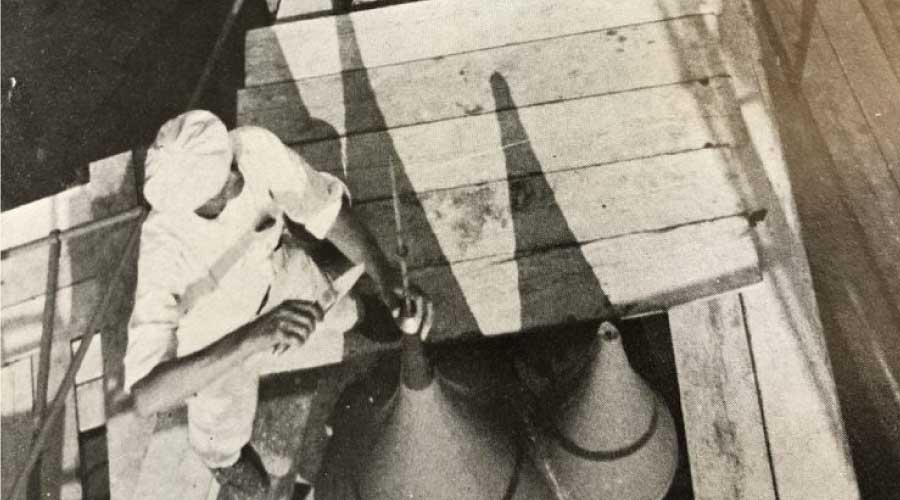Training that pays
Technical training for front-line workers brings organizations dividends, but only if managers do their homework first
The primary responsibility of front-line technicians in maintenance and engineering departments is to keep their facilities’ systems working as efficiently as possible. For technicians to achieve this goal, managers will have to make sure technicians have the necessary skills and knowledge. By creating a comprehensive training strategy, managers can increase their department’s productivity and ensure long-term success for their organizations.
Understanding Technician Needs
Before setting up the program, managers need to meet with technicians and ask them about the technical skills that would make their jobs easier.
“I really think the most common mistake is not providing what employees need,” says Mark Cobb, executive director of facility services of Charleston (S.C.) School District. “Often times, management thinks they know what their employees need.”
But these assumptions too often are wrong because managers fail to talk with their technicians. Without these discussions, managers will not fully understand their employees’ skills and knowledge.
“Too often, especially when it comes to technical training, we tend to underestimate what our people already know,” says Pieter van der Have, assistant vice president of plant operations at the University of Utah in Salt Lake City, adding that it can be a challenge for managers to find training opportunities that focus on intermediate skills. “I often receive calls from training-film producers, and they seem to focus a lot on the very basic.”
In addition to technical training, managers might consider offering employees the opportunity to take part in more general training and education. For example, employees at all levels of maintenance and engineering need to know how to efficiently use a computer and job-specific software.
“We provide computer training at no cost to them during working hours,” van der Have says. While such training doesn’t necessarily apply directly to their jobs, van der Have says it helps employees enhance their overall skills. It also demonstrates to the employee that the organization recognizes technicians as individuals outside the workplace.
Managers also can use training to reinforce organizational goals and expectations. For example, Cornell University in Icthaca, N.Y., conducts a four-day, leadership-development program every year for new supervisors.
“The program has changed the culture of our organization,” says Jim Gibbs, the university’s director of maintenance, adding that it helps participants concentrate on a set of values. “Our values include truth, respect, teamwork, excellence, and integrity, and everything we do is based on those words. For example, on the value of teamwork, we look for people who build working relationships to solve problems and achieve common goals. We look for people who demonstrate sensitivity to the needs of others and are willing to offer assistance and feedback to others.”
For more information on this program, visit www.aff.cornell.edu/as/hr/ldp.html
Delivery Options
Identifying the information that technicians need is just one part of meeting their training needs. Managers also have to determine the most effective method of delivering training.
“You need to think long and hard about how people learn,” Gibbs says. For example, some employees might not feel comfortable asking questions in front of a large group or their peers. As a result, they might leave the training session without a thorough understanding of the subject.
“I tend to lean toward small groups for training — 15 people at the most,” says van der Have. Such sessions can facilitate interaction among participants more effectively, he says.
Managers also should consider the benefits and drawbacks of both off-site and on-site training. The networking that takes place at off-site training sessions could be very valuable.
“Consider out-of-town large-group training as a way of providing employees a way to network and share their problems and potential solutions with others,” Gibbs says.
When focusing on specific systems in a facility, however, on-site training might be a better alternative.
“It would be better to have someone come to your facility and train them on your equipment,” says Robert Pulliam, director of buildings and grounds for New Berlin (Wis.) Public Schools. “That is the absolute best because they’re not talking about a generic brand. It’s your equipment, your problems and your systems.”
In some cases, managers might consider a combination of on-site and off-site training. For example, Pulliam provides his maintenance staff off-site training on maintaining boiler systems. This training focuses on preventive maintenance and serious troubleshooting tasks. He also provides maintenance and custodial workers with less technical on-site training focusing on general operation and minor troubleshooting.
Managers also can benefit from weighing several other factors that could impact the effectiveness of training, such as the time of day the training takes place and the length of the sessions.
“Make sure the room is kind of cool and coffee is available,” Pulliam says, adding that he tries to keep in-house training sessions to 90 minutes. “Longer than that and their attention begins to fade.”
Instructors can make a major difference in the success of training efforts. Managers should seek trainers who are energetic and encourages interaction, particularly on topics that employees might deem boring.
Cost vs. Quality
Despite the role of training in keeping both equipment and facilities operating smoothly, funding for training traditionally is difficult to come by. So managers must budget carefully. The budgeted funds must cover more than just training fees. Managers need to justify related expenses, including transportation, food and hotel costs.
Given this challenge, managers might be tempted to specify the least expensive training. While training doesn’t need to be expensive to be valuable, managers should note that if the sessions don’t meet technician needs, the funds are wasted.
“I don’t look at the price,” Pulliam says. “I look at the quality of it.” He adds that one of the most expensive training sessions his staff attends also is one of the most valuable.
“When the guys come back, they’re super tuned up and won’t stop talking about it,” he says.
To ensure training quality, managers should make sure instructors treat trainees like professionals and have thorough knowledge of the subject they’re teaching.
“I don’t want them to come back and say ‘The coffee and donuts were excellent, but I seemed to know more than the instructor,’ ” he says. If such problems occur, managers should contact the training provider and request a refund.
The Feedback Factor
The most effective ways to assess the value of training is to meet with those who attended to gather their comments on its effectiveness — or lack of it.
“I ask them how was the session was — if the information over their head or if it was just right,” Pulliam says, adding that the interview is a win-win situation if it is done right. It helps ensure improvement in employees’ skills, which in turn, helps the facilities they maintain.
On the downside, failing neglecting to talk with employees after a training session can harm employee morale. The message to employees in this case is that management does not care whether or not the training was cost-effective.
By placing value on training, organizations place value on their employees. The University of Utah demonstrates its view of training through its apprenticeship program for employees seeking journeyman status.
“We put them through school and help pay the costs,” van der Have says. “After they graduate, they receive journeyman status and the pay consistent with that.
“We lose between 30-40 percent of those individuals, but in the meantime, we get the benefit of their skill and dedication, and those that do stay behind are dedicated employees to the institution. I feel like there is still a gain. Whenever you get a better employee through training, it is just better for you and your organization.”
Training Sources
The following organizations provide training for maintenance and engineering professionals:
American Society of Heating,
Refrigerating and Air-Conditioning
Engineers (ASHRAE)
1791 Tullie Circle N.E.
Atlanta, GA 30329
(800) 527-4723
www.ashrae.org
BOMI Building Owners & Managers Institute
1521 Ritchie Highway
Arnold, MD 21012
800-235-2664; fax: (410) 974-1935
service@bomi-edu.org
www.bomi-edu.org
University of Wisconsin
HVAC&R Center
1415 Engineering Drive, Suite 2342
Madison, WI 53706-1607
(800) 858-3774
info@irc.wisc.edu
www.hvacr.wisc.edu/
|
Related Topics:












